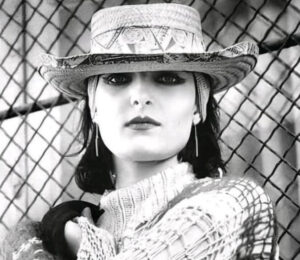
In the fast-paced world of fashion, where trends evolve at breakneck speed, certain brands emerge as timeless storytellers, creating not just apparel but a movement. One such name carving its place in the contemporary fashion scene is Séfr. Known for its minimalist ethos and deep-rooted connection to indigenous trends, Séfr represents more than just clothing—it’s a narrative of heritage, craftsmanship, and cultural preservation.
The Birth of Séfr: A Story Rooted in Friendship
Séfr, a Swedish fashion brand, began its journey in 2016 in Gothenburg, Sweden, founded by friends Per Fredrikson and Sinan Abi. The name “Séfr” itself is derived from the Arabic word for “zero,” reflecting the brand’s minimalist philosophy and the founders’ desire to build something from scratch—free of excess, clutter, and pretense. This foundation symbolizes not only a clean slate in fashion design but also a broader cultural inclusivity that resonates in their collections.
Fredrikson and Abi, both with diverse cultural backgrounds, initially ventured into fashion by running a vintage clothing store in Gothenburg. Their shared appreciation for timeless design and well-crafted garments eventually evolved into a passion for creating their own line. Séfr was born out of this love for quality and simplicity—a response to the over-saturation of fast fashion and fleeting trends.
The Aesthetic Philosophy: Minimalism Meets Timeless Design
Séfr’s aesthetic is characterized by a minimalist approach that prioritizes clean lines, neutral palettes, and classic silhouettes. The brand is often described as a fusion of Scandinavian simplicity and global cultural elements, creating garments that are understated yet impactful. Each piece is designed to be versatile, encouraging wearers to style them in various ways across different seasons.
Unlike many brands that chase current trends, Séfr focuses on creating timeless designs that transcend the seasons. This deliberate choice aligns with their ethos of sustainability, promoting long-term use and reducing fashion waste.
A Spotlight on Indigenous Trends
While rooted in Scandinavian design principles, Séfr’s collections often draw inspiration from indigenous craftsmanship and cultural traditions. This connection stems from the founders’ personal histories and their commitment to honoring and celebrating heritage through fashion. By incorporating indigenous patterns, fabrics, and techniques, Séfr bridges the gap between modern minimalism and traditional artistry.
Textile Inspirations
Séfr’s focus on indigenous trends is evident in its choice of textiles. The brand frequently collaborates with artisans and sources fabrics that carry cultural significance, such as handwoven materials or naturally dyed fabrics. This not only adds depth to their collections but also supports traditional craftsmanship in communities around the world.
Cultural Symbols and Patterns
Séfr incorporates subtle nods to indigenous patterns in its designs, often reinterpreting them in minimalist ways. For example, geometric motifs inspired by Berber textiles or Scandinavian folklore are simplified into clean, modern designs that maintain their cultural essence without overpowering the garment.
Empowering Artisans
The brand’s partnerships with indigenous communities are not merely transactional. Séfr prioritizes fair trade and ethical practices, ensuring that artisans are fairly compensated for their work. By doing so, the brand contributes to preserving traditional skills that might otherwise be lost in the face of industrialization.
Sustainability: Beyond a Buzzword
Séfr’s commitment to sustainability goes hand-in-hand with its focus on indigenous trends. By embracing slow fashion, the brand challenges the wasteful practices of fast fashion. Their approach includes:
•Sustainable Materials: Séfr uses organic cotton, recycled wool, and other eco-friendly fabrics to reduce its environmental footprint.
•Local Production: The brand emphasizes local production wherever possible, ensuring that their supply chain remains transparent and ethical.
•Seasonless Collections: Instead of adhering to the traditional fashion calendar, Séfr creates seasonless collections that encourage year-round wearability.
Indigenous Trends in a Global Context
In recent years, indigenous trends have gained significant attention in the global fashion industry. However, this attention is often criticized for cultural appropriation—brands borrowing elements from indigenous cultures without proper acknowledgment or respect. Séfr stands out by taking a thoughtful and respectful approach to incorporating indigenous aesthetics.
Cultural Exchange, Not Appropriation
Séfr ensures that their use of indigenous elements is grounded in collaboration and mutual respect. By working directly with artisans and communities, they create a platform for cultural exchange rather than exploitation.
Highlighting Stories Behind the Garments
Each Séfr collection is accompanied by narratives that highlight the origins of their designs. Whether it’s a story about a specific textile or the history of a pattern, the brand educates its audience about the cultural significance of their clothing.
Modernizing Traditions
Instead of replicating traditional garments, Séfr reinterprets them for a modern audience. This approach ensures that the designs remain relevant while preserving their cultural roots.
Key Collections: A Blend of Heritage and Modernity
Séfr’s past collections provide a glimpse into how the brand weaves indigenous trends into its designs. A few notable examples include:
•The Desert-Inspired Capsule
Drawing inspiration from North African landscapes and Berber textiles, this collection featured earthy tones, flowing silhouettes, and geometric embroidery that paid homage to the region’s rich heritage.
•Nordic Heritage Collection
Celebrating Scandinavian folklore, this collection incorporated traditional knit patterns and muted color palettes, blending nostalgia with contemporary minimalism.
•Global Artisan Project
Séfr partnered with artisans from around the world to create a collection that showcased handcrafted elements, such as hand-dyed fabrics and intricate beadwork. Each piece told the story of the artisans who made it, connecting wearers to the people behind the garments.
Challenges and Criticism
While Séfr’s approach to fashion has garnered praise, it is not without its challenges. The brand faces the delicate task of balancing cultural inspiration with respect and authenticity. Any misstep in representing indigenous trends could lead to accusations of cultural insensitivity—a risk that Séfr addresses through collaboration and transparency.
Additionally, their commitment to slow fashion and ethical practices comes at a cost. Séfr’s pieces are often priced higher than mass-produced alternatives, which can limit their accessibility. However, the brand argues that their pricing reflects the true cost of sustainable and ethical fashion.
The Future of Séfr
Looking ahead, Séfr aims to deepen its connection with indigenous trends while continuing to innovate in the realm of minimalist design. The brand has expressed interest in expanding its artisan partnerships and exploring new cultural influences. Additionally, Séfr plans to invest in technology to further reduce its environmental impact, such as exploring biodegradable fabrics and carbon-neutral production methods.
Why Séfr Matters in Today’s Fashion Landscape
Séfr’s emphasis on indigenous trends and sustainable practices makes it a beacon of hope in an industry often criticized for its environmental and cultural exploitation. By prioritizing quality over quantity, heritage over hype, and collaboration over competition, Séfr offers a blueprint for a more thoughtful approach to fashion.
In a world where clothing often serves as a disposable commodity, Séfr challenges us to view garments as meaningful artifacts—each piece carrying a story, a purpose, and a connection to something greater.
Séfr’s journey is a testament to the power of starting from zero and building something that not only reflects personal values but also makes a positive impact on the world. Through its dedication to minimalism and indigenous trends, the brand continues to inspire a new generation of consumers to choose fashion that is both beautiful and meaningful.
No comments yet.








